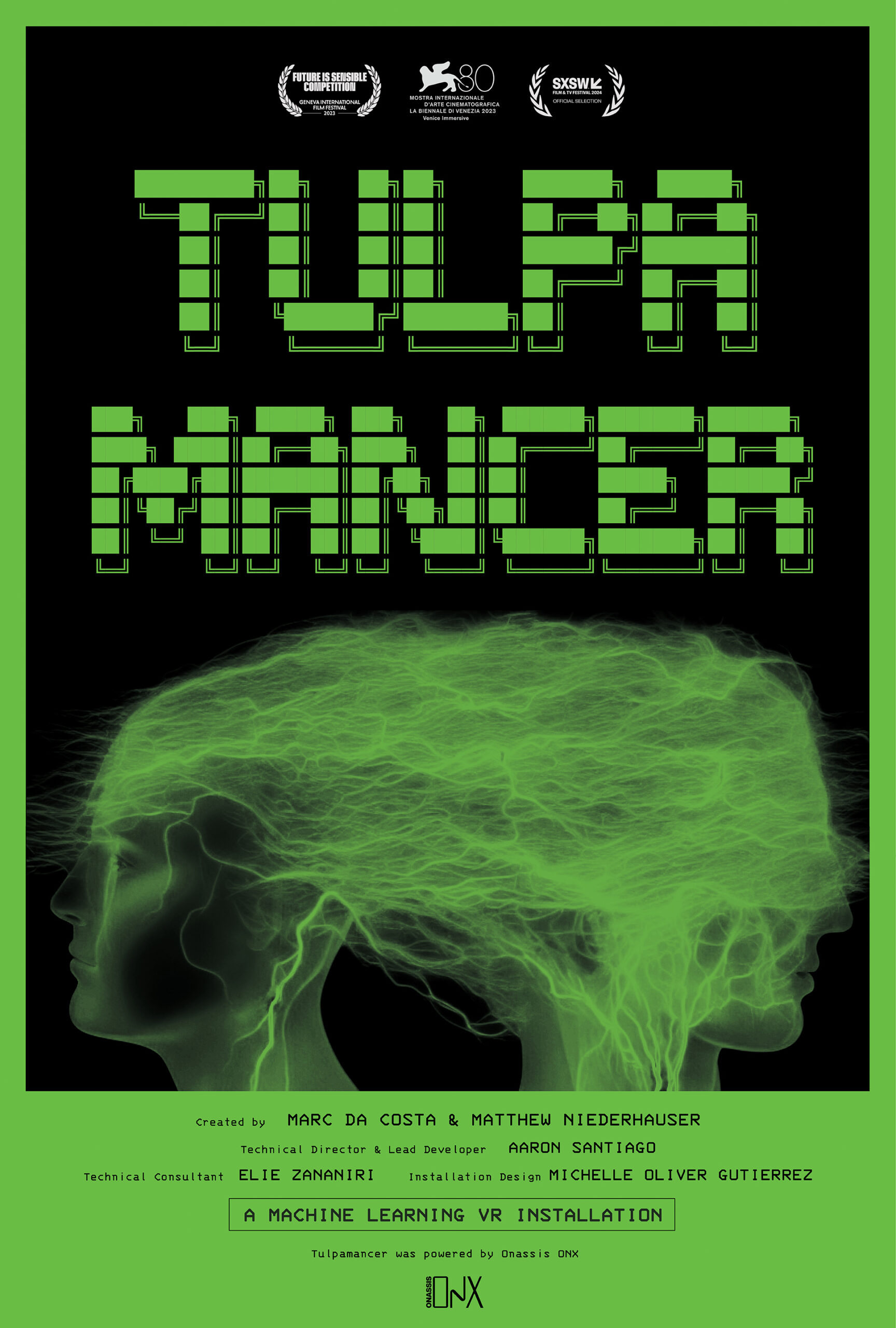TULPAMANCER (2023)
Credits: Creator & Producer
Premiered at The Venice Film Festival and SXSW Film Festival

“Tulpamancer” is a machine learning VR installation that shapes a dreamlike, immersive encounter with the memories and possible futures of each participant. Inspired by the concept of a tulpa, a being which begins in the imagination but then develops its own presence and reality, the experience explores how the intersection of generative AI and VR can shape new ways of encountering ourselves.
Sitting down at a retro computer terminal, participants first encounter the tulpa through a series of questions about their own lives. Designed in consultation with large language models and shamans, the questions will prompt participants to revisit their childhood, major life moments, and even short term memories of what happened earlier in the day. After typing out their responses, they are then invited to meet in a world prepared uniquely for them.
Participants then put on a VR headset and are led on a journey by their tulpa through a series of uniquely generated virtual scenes and voiceovers that invoke and question the memories of their own past and their potential fates. Ultimately, every interaction produces a unique work that is deleted at the conclusion of its viewing, left only to resonate in the minds of each participant.
What does it mean to share your life with a machine? The tulpa – an idea rooted in Tibetan Buddhism but popularized by the theosophical thinker Annie Bessant (1847-1933) – refers to the physical manifestation of thought through spiritual practice and intense concentration. A transformation in society now appears to loom with the emergence of AI, a technology that derives its power by concentrating intensely on enormous volumes of online text and images – the digital traces of our collective unconscious. The tulpa was a way of making sense of and providing alternative frames for modernity. This work thus provides participants an occasion to explore alternative histories and futures for AI.
Emerging machine learning technologies give the spooky feeling of inferring or grasping at a world based on the input of an individual. But how do the input and output actually relate? This call and response between a participant and machine learning model is where “Tulpamancer” plays, asking not whether this next generation of artificial intelligence is actually sentient, but rather whether we can dream with it.
Created by Marc Da Costa and Matthew Niederhauser
Technical Direction by Aaron Santiago